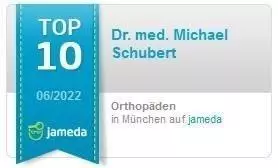Kyphosis - causes, clinical picture, treatment
A kyphosis is a curvature of the spine in the area of the thoracic spine and the sacrum. When this backward curvature occurs in several sections of the spine or is severe over 40 degrees, it is called pathological kyphosis. The reasons for this are as varied as the symptoms and treatment options.
What types of kyphosis are there?
Doctors distinguish between functional and fixed kyphosis on the one hand and between arcuate and angular kyphosis on the other. A functional kyphosis can be caused, for example, by malpositions in other sections of the spine and can be corrected by means of compensatory movements. A fixed kyphosis, on the other hand, can no longer be compensated because it is fixed by bony changes. Doctors speak of an arcuate kyphosis as an arcuate kyphosis. This is mostly due to posture and affects many vertebral segments. Anguary kyphosis, on the other hand, is caused by trauma, tumors, or inflammation and affects only one or two segments.
Causes and symptoms of the disease
Spinal curvature can have different causes. For one thing, it can be innate. On the other hand, the disease can be triggered by poor posture, tumors, trauma or diseases such as osteoporosis, Bechterew's disease or Scheuermann's disease. Poor posture in childhood and adolescence in particular is a frequent trigger. However, adults can also develop kyphosis, especially through sedentary work and insufficiently developed muscles. Some of those affected have no symptoms, others suffer from pain in the area of the crooked thoracic spine. In addition, breathing difficulties, cardiovascular problems or numbness in the arms or legs and even bladder or bowel dysfunction can occur. Mobility is generally restricted and sleep disturbances can occur due to the symptoms.
diagnosis and treatment
Kyphosis is easily recognizable for the orthopedist, for example, by the fact that the back is not evenly rounded when the patient bends over. Instead, there is a bulge where the curvature occurs. X-rays, CT or MRT finally bring clarity about the exact extent. However, general medical history should also be discussed to identify possible organic causes. Physiotherapy can improve posture and discomfort if weak back muscles have caused the curvature. Both the back and chest muscles are trained. In some cases, wearing a corset makes sense. Surgery is only necessary in extreme cases. However, this can only take place when the growth process is complete, i.e. not in children or adolescents. During the procedure, two or three vertebrae are stiffened so that the spine can bear full weight again.
